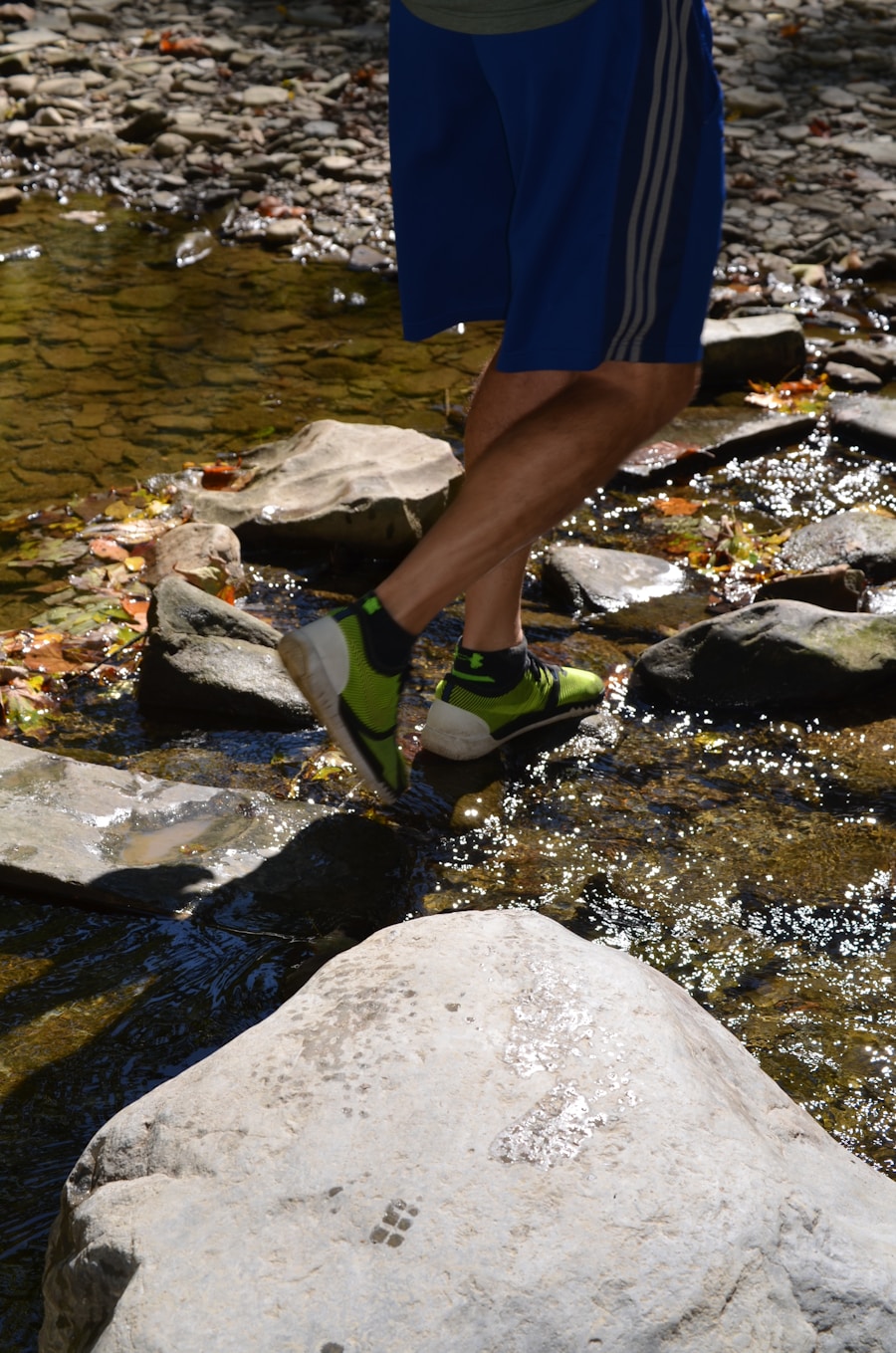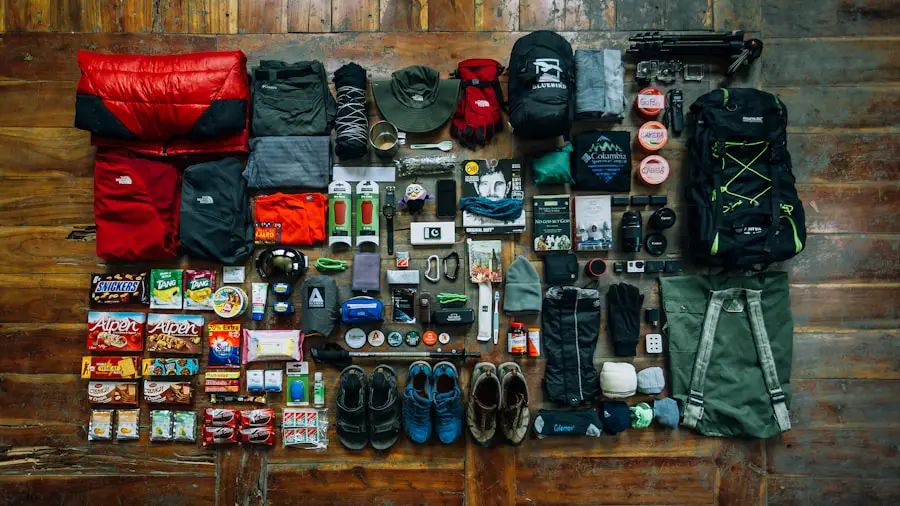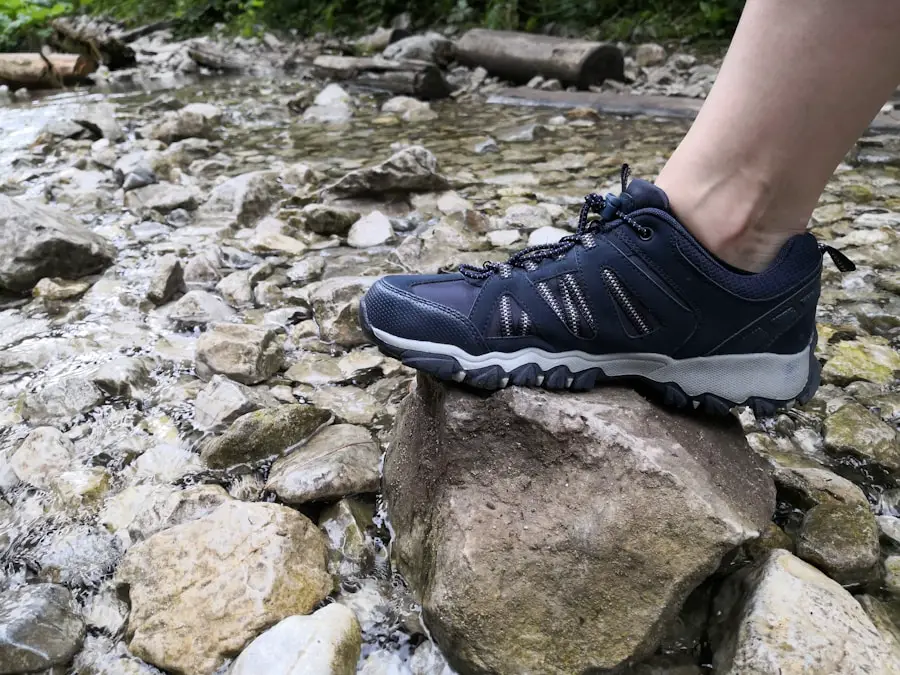The choice of footwear for hiking has long been a topic of spirited debate among outdoor enthusiasts. While traditional hiking boots have been the go-to option for many, a growing number of hikers are turning to running shoes as a viable alternative. This shift raises important questions about the suitability of running shoes for various hiking conditions and terrains.
Proponents argue that running shoes offer advantages such as lightweight construction and breathability, while critics point to the lack of ankle support and durability that hiking boots typically provide. As more hikers seek comfort and performance on the trails, understanding the pros and cons of running shoes becomes essential for making informed decisions. The discussion surrounding footwear for hiking is not merely a matter of personal preference; it encompasses a range of factors including terrain, distance, and individual foot anatomy.
With the rise of minimalist and trail running shoes, the lines between running and hiking footwear have blurred, prompting hikers to reconsider their choices. This article delves into the advantages and disadvantages of wearing running shoes for hiking, offering insights into how to select the right pair and tips for optimizing their performance on the trails.
Key Takeaways
- Running shoes can be a controversial choice for hiking
- Pros of wearing running shoes for hiking include lightweight and comfortable design
- Cons of wearing running shoes for hiking include less ankle support and durability
- Considerations for choosing the right running shoes for hiking include traction and support
- Tips for making running shoes work for hiking include using insoles for extra support
Pros of Wearing Running Shoes for Hiking
Lightweight and Freedom of Movement
Traditional hiking boots can be heavy, leading to fatigue over long distances. In contrast, running shoes are designed to be lightweight, allowing hikers to move more freely and with less effort. This is particularly beneficial on long hikes or when traversing challenging terrain where agility is paramount. The reduced weight can also enhance overall endurance, enabling hikers to cover greater distances without succumbing to fatigue.
Breathability and Comfort
Many running shoes are constructed with mesh uppers that promote airflow, helping to keep feet cool and dry during strenuous activities. This feature is especially valuable in warmer climates or during summer hikes when temperatures can soar. The moisture-wicking properties of many running shoe materials also help to prevent blisters and discomfort caused by sweat accumulation.
Cushioning and Impact Absorption
The cushioning found in running shoes can provide a comfortable ride over rocky or uneven surfaces, absorbing impact and reducing strain on joints.
Cons of Wearing Running Shoes for Hiking

Despite their advantages, there are notable drawbacks to using running shoes for hiking that should not be overlooked. One of the primary concerns is the lack of ankle support that running shoes typically offer. Hiking often involves navigating uneven terrain, steep inclines, and rocky paths, all of which can increase the risk of ankle sprains or injuries.
Traditional hiking boots are designed with higher collars that provide additional support and stability to the ankle, which can be crucial in preventing injuries during challenging hikes. For those who are prone to ankle issues or who plan to tackle particularly rugged trails, this lack of support can be a significant disadvantage. Durability is another area where running shoes may fall short compared to their hiking boot counterparts.
Hiking boots are constructed with robust materials designed to withstand the rigors of outdoor use, including abrasion from rocks and roots, as well as exposure to water and mud. Running shoes, while often made from lightweight materials that enhance comfort, may not hold up as well under these conditions. Hikers who venture into wet or muddy environments may find that running shoes absorb water quickly and take longer to dry, leading to discomfort and potential foot problems.
Additionally, the tread patterns on running shoes may not provide the same level of traction as those found on dedicated hiking footwear, which can be a critical factor when navigating slippery or steep surfaces.
Considerations for Choosing the Right Running Shoes for Hiking
| Consideration | Description |
|---|---|
| Fit | Ensure the shoes fit snugly but not too tight, with enough room for your toes to wiggle. |
| Support | Look for shoes with good ankle and arch support to prevent injuries on uneven terrain. |
| Traction | Choose shoes with a durable outsole and good traction for grip on various surfaces. |
| Waterproofing | Consider waterproof or water-resistant shoes for hiking in wet conditions. |
| Weight | Lightweight shoes can reduce fatigue on long hikes, while heavier shoes may offer more durability. |
| Toe Protection | Look for shoes with reinforced toe caps to protect your toes from rocks and debris. |
When considering running shoes for hiking, several factors should be taken into account to ensure a suitable fit for the intended terrain and conditions. First and foremost is the type of terrain one plans to hike on. For well-maintained trails with minimal obstacles, a standard road-running shoe may suffice; however, for more rugged or technical trails, trail-running shoes with enhanced grip and stability features are recommended.
These shoes often come equipped with deeper lugs on the outsole that provide better traction on loose or uneven surfaces. Another important consideration is fit and comfort. Hikers should prioritize finding a shoe that fits well without being too tight or too loose.
A proper fit is essential not only for comfort but also for preventing blisters and other foot ailments during long hikes. It’s advisable to try on shoes later in the day when feet are slightly swollen from activity, as this will provide a more accurate representation of how they will feel during a hike. Additionally, considering the use of moisture-wicking socks can further enhance comfort by reducing friction and keeping feet dry.
Tips for Making Running Shoes Work for Hiking
To maximize the effectiveness of running shoes while hiking, there are several practical tips that can help ensure a positive experience on the trails. First, it’s crucial to break in new shoes before embarking on longer hikes. This process allows the materials to conform to the shape of the foot and helps prevent discomfort or blisters during actual hikes.
Gradually increasing the distance of walks or shorter hikes in new shoes can facilitate this adjustment period. Another tip is to pay attention to sock choice. Opting for moisture-wicking socks made from synthetic materials can significantly enhance comfort by keeping feet dry and reducing friction against the shoe’s interior.
Additionally, using insoles designed for added arch support can improve overall comfort and stability while hiking in running shoes. These insoles can help distribute pressure more evenly across the foot and provide additional cushioning where needed.
Alternatives to Running Shoes for Hiking

While running shoes may appeal to some hikers, there are numerous alternatives available that cater to different preferences and needs. Trail-running shoes represent a middle ground between traditional running shoes and hiking boots, offering features such as enhanced traction, durability, and some level of ankle support while maintaining a lightweight design. These shoes are specifically engineered for off-road conditions and often incorporate rugged outsoles that excel in various terrains.
For those seeking more support without sacrificing comfort, lightweight hiking boots or mid-cut hiking shoes can be an excellent option. These alternatives provide additional ankle support while still being lighter than traditional hiking boots. They often feature waterproof materials that keep feet dry in wet conditions while offering sufficient breathability for warmer weather hikes.
Additionally, sandals designed for hiking can be suitable for certain conditions, particularly in hot climates where breathability is paramount; however, they may not provide adequate protection or support for more challenging trails.
Expert Advice on the Topic
Experts in outdoor gear and footwear often emphasize the importance of personal preference when it comes to choosing footwear for hiking. Many seasoned hikers recommend trying out various types of footwear to determine what feels best based on individual foot shape and hiking style. Some experts suggest that those new to hiking should start with traditional hiking boots to build confidence on the trails before experimenting with lighter options like running shoes or trail runners.
Additionally, professionals advise considering the specific demands of each hike when selecting footwear. For instance, if a hiker plans to tackle a multi-day backpacking trip with heavy loads, investing in a sturdy pair of hiking boots may be wise due to their support and durability. Conversely, if someone is planning a day hike on well-maintained trails with minimal elevation gain, running shoes could be an excellent choice for their lightweight comfort.
Making the Best Decision for Your Hiking Adventures
Ultimately, the decision between running shoes and traditional hiking footwear hinges on individual preferences, specific hiking conditions, and personal comfort levels. While running shoes offer advantages such as lightweight construction and breathability, they may not provide the necessary support or durability required for more challenging hikes. Conversely, traditional hiking boots excel in providing stability and protection but can be heavier and less breathable.
Hikers should carefully assess their needs based on terrain type, distance, and personal foot anatomy before making a choice.
By considering factors such as fit, terrain compatibility, and potential alternatives like trail-running shoes or lightweight hiking boots, individuals can make informed decisions that enhance their overall hiking experience. Whether opting for running shoes or sticking with traditional boots, what matters most is finding footwear that allows for safe and enjoyable adventures in nature.If you’re considering wearing running shoes for hiking, you may want to check out this article on the best carry-on luggage for international travel here. It’s important to have the right gear and equipment when embarking on any adventure, so make sure you’re prepared with the proper footwear and luggage for your next hiking trip.
Love travel? Join Our Facebook Community For More Tips.
FAQs
Can you wear running shoes for hiking?
Yes, you can wear running shoes for hiking, especially for light and moderate trails. Running shoes provide good traction, support, and comfort for hiking on well-maintained trails.
What are the benefits of wearing running shoes for hiking?
Running shoes are lightweight, breathable, and provide good cushioning and support, making them suitable for hiking on less rugged terrain. They also offer good traction and stability.
Are there any drawbacks to wearing running shoes for hiking?
While running shoes are suitable for light and moderate hiking, they may not provide enough ankle support and protection for more rugged and challenging trails. They also may not have the same level of durability as hiking boots.
What should I consider when choosing running shoes for hiking?
When choosing running shoes for hiking, consider the terrain and distance of the hike, as well as the level of support and protection needed. Look for running shoes with good traction, cushioning, and stability.
Can I wear running shoes for hiking in wet conditions?
Running shoes may not provide the same level of water resistance and protection as hiking boots, so they may not be the best choice for hiking in wet conditions or on muddy trails. Consider wearing waterproof hiking shoes or boots instead.
